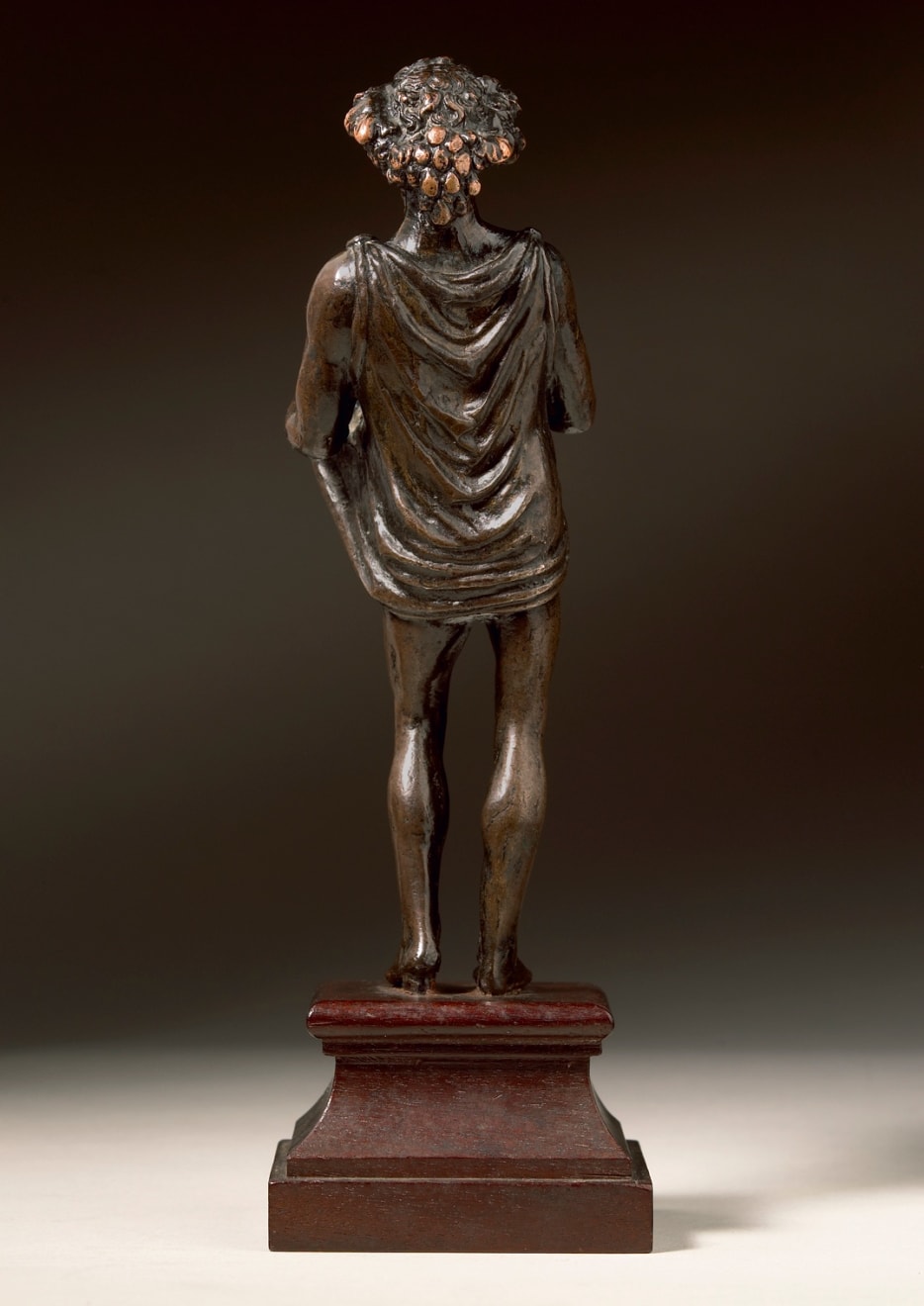Priapus Oil Lamp, Northern Italian (possibly Padua), circa 1600
20.3 x 7 x 8.5 cm
Further images
The present bronze is a northern Italian statuette of Priapus. According to tradition, Priapus was the son of Aphrodite and Dionysus and was an ithyphallic deity of fertility associated with the protection of livestock, fruit, gardens, and male genitalia in ancient Greece and Rome.
Adorned with a full wreath of ripe fruit, the bronze figure grasps the edges of his classical garment, lifting it upwards to create a deep fold which cradles a brimming basket of plentiful fruit. This basket, overflowing with abundance, serves as a symbol of his association with fertility and draws a connection to the offerings of produce which were dedicated to his image in antiquity:
‘In spring with roses, in autumn fruit
and in summer with ears of corn I’m covered’
(Carmina Priapea, LXXXIII)
Whilst the worship and representation of Priapus in antiquity originated in Asia Minor (modern-day Turkey) and gradually spread throughout the Mediterranean, it was not until the Alexandrian period that his appreciation was fully realised. The Hellenistic period saw the emergence and increased popularity of Priapus’ characterisation with a full beard and raised tunic, bearing an abundance of fruit. The anasyromenos position, meaning ‘to lift up one’s skirt’ in ancient Greek, was a characteristic feature of the handful of ancient marble statues and bronze models of Priapus which survive to us. It is probable that the present bronze was modelled after one of these ancient statuettes which were discovered in the Renaissance. The anasyromenos pose can also be observed in other depictions of figures associated with fertility in antiquity, such as Hermaphroditus. Elevating his himation, the present figure reveals his characteristically oversized phallus, a direct connection to his association with fertility, as it provides support for the overflowing basket. The depiction of the basket of abundance and prominent phallus as symbols of fertility and good fortune can also be found in the most iconic image of Priapus, the painting of the deity in a fresco from the famous House of the Vettii in Pompeii.
Although this model is extremely rare in Renaissance sculpture, it shares a connection with other bronze oil lamps and statuettes of Pan, various Satyrs, and other grotesques popularised by northern Italian sculptors, such as Andrea Riccio and Severo da Ravenna, in the sixteenth century. However, in contrast to his phallic counterparts, the present bronze of Priapus is entirely anthropomorphic, representing not a figure of lustful sexual debauchery, but rather a symbol of good fortune and abundance.
Related Literature:
M. Grant, Eros in Pompeii: The Erotic Art Collection of the Museum in Naples, New York, 1975
P. Stewart, ‘Fine Art and Coarse Art: The Image of Roman Priapus’, Art History 20, 1997, pp. 575-588
C. Avery, Bernini: Genius of the Baroque, London, 1997, pp. 27-28, fig. 24Provenance
Sylvia Phillis Adams (1907-1995);
The Adams Collection, Part V: Renaissance & Baroque Bronzes, Bonhams, London, 23rd May 1996, lot 16
Private collection, Switzerland
Join our mailing list
* denotes required fields
We will process the personal data you have supplied to communicate with you in accordance with our Privacy Policy. You can unsubscribe or change your preferences at any time by clicking the link in our emails.












